TheJapanese armor kept at the Pietro Canonica Museum in Villa Borghese, Rome, is once again on public view in its entirety. The work, which can be dated between the last quarter of the 17th century and the mid-19th century, is back on display after an articulated conservation intervention, which lasted six months and was overseen by the Capitoline Superintendency. Placed in a new setting in the Fireplace Room, the rare armor is now housed in a case designed to ensure optimal conservation conditions, flanked by a structural support that allows for a coherent and detailed reading, without altering its stability.
The armor, composed of numerous elements that entirely cover the body, is one of the few examples preserved in Italy within a public collection. It is part of the personal collection of Pietro Canonica (Moncalieri, 1869 - Rome, 1959), a Piedmontese sculptor and collector, who over the course of his long life brought together objects and art memorabilia from various traditions. The artifact has a complex structure, composed of elements made of metal, leather, bone, silk, wood, linen and urushi lacquer. Prominent among the various components are the MABIASI helmet, with two protruding bronze prominences, arm guards, iron plate shields, and leather shoes. The armor was severely compromised, due to the combined effects of weathering, perishable materials, inadequate old maintenance, and an unsuitable display stand.
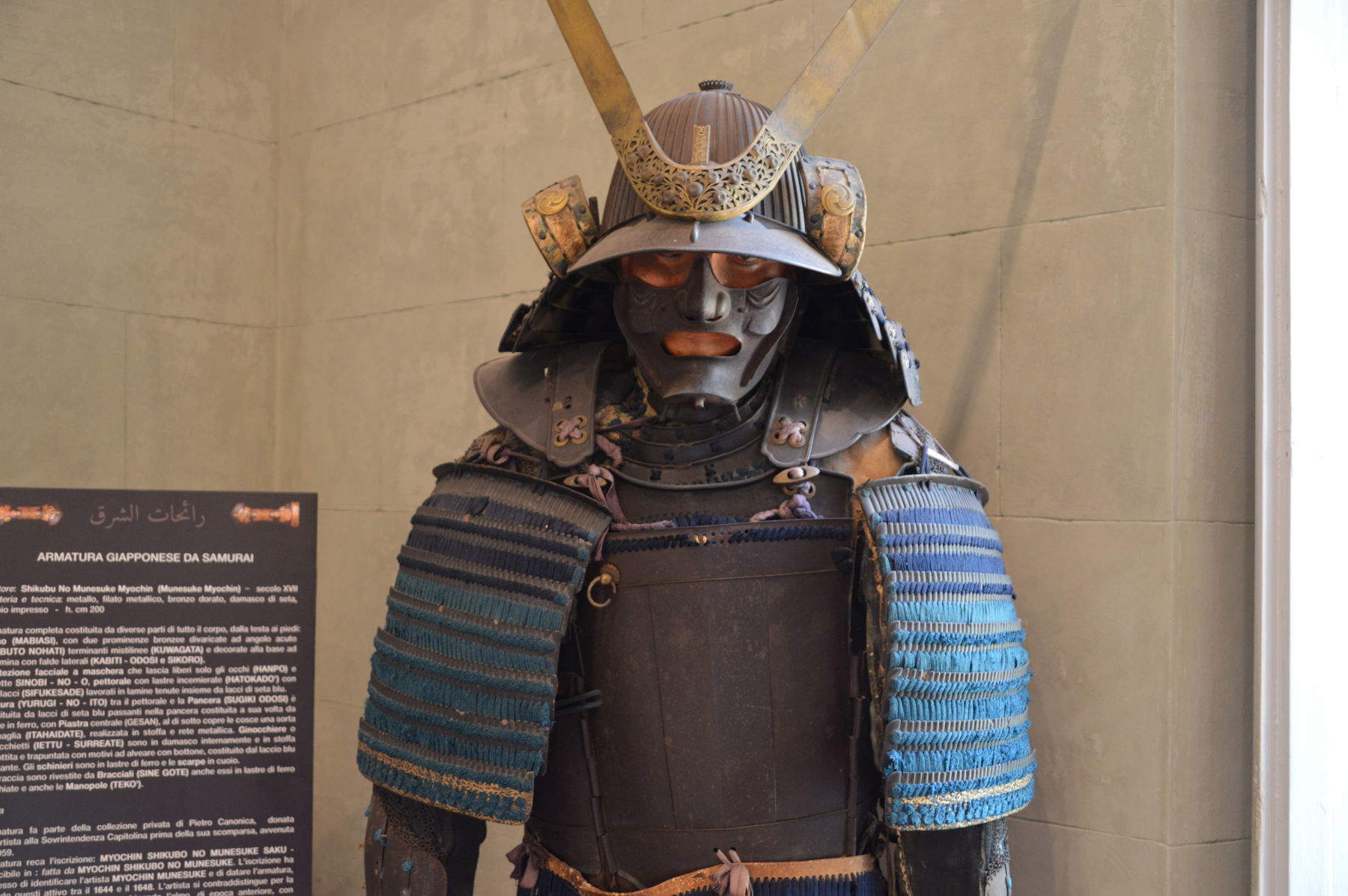
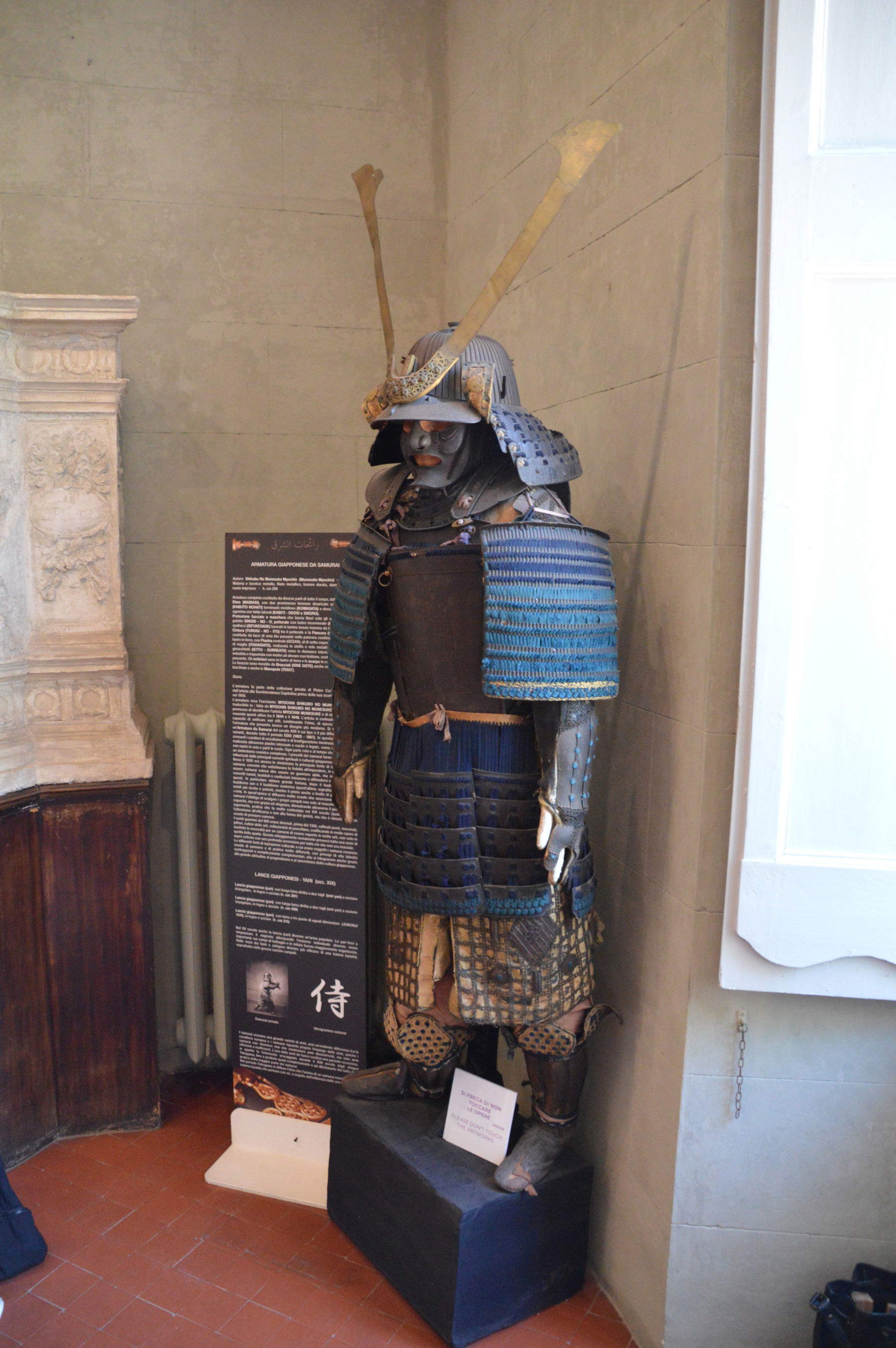
The restoration, which began in July 2024 and was completed in December of the same year, involved an in-depth phase of study and comparison with some of Italy’s leading institutions experienced in the conservation of Oriental armor, including the Royal Armory in Turin, the Stibbert Museum in Florence, the Museum of Oriental Art in Venice, and the National Museum of Oriental Art “Giuseppe Tucci” in Rome. Given the rarity of the artifact and the scarcity of previous similar restorations in the Italian panorama, the intervention was configured as a novel project, characterized by a strong experimental and interdisciplinary dimension.
During the analysis, important cognitive elements about the armor emerged. Inside the helmet the signature of the author Yoshinaga was found, while on the chin of the mask an inscription refers to the Myōchin school, one of the best-known forging traditions of feudal Japan. The high quality of execution of some components coexists with heterogeneous stylistic elements, indicating how the armor was subject to later modifications. It is, in fact, a “hybrid” set of armor, assembled and reworked over time, following a widespread practice in modern and late modern times: many samurai armors were refurbished or enriched in the course of their existence for functional, aesthetic, or collectors’ reasons.
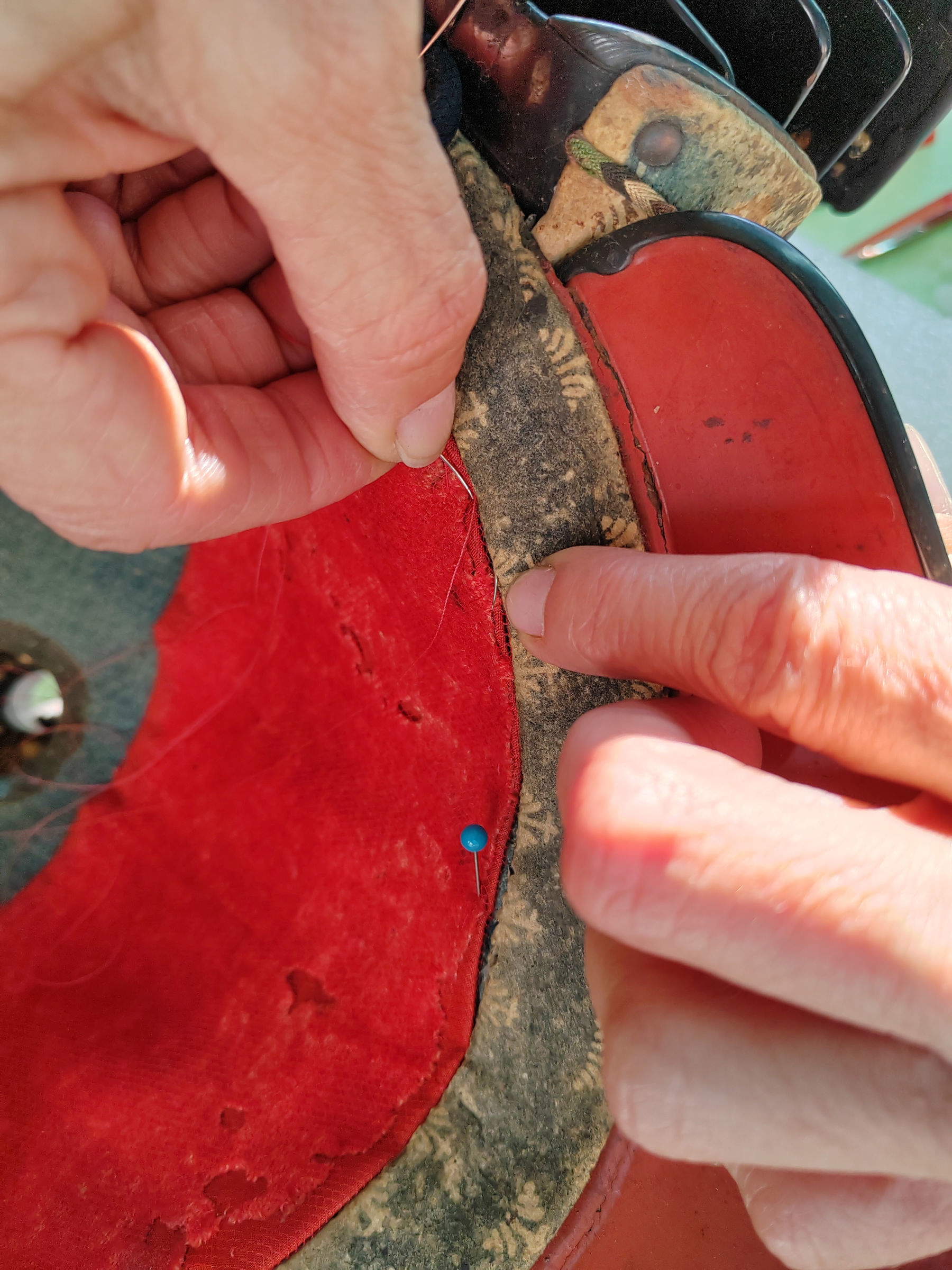
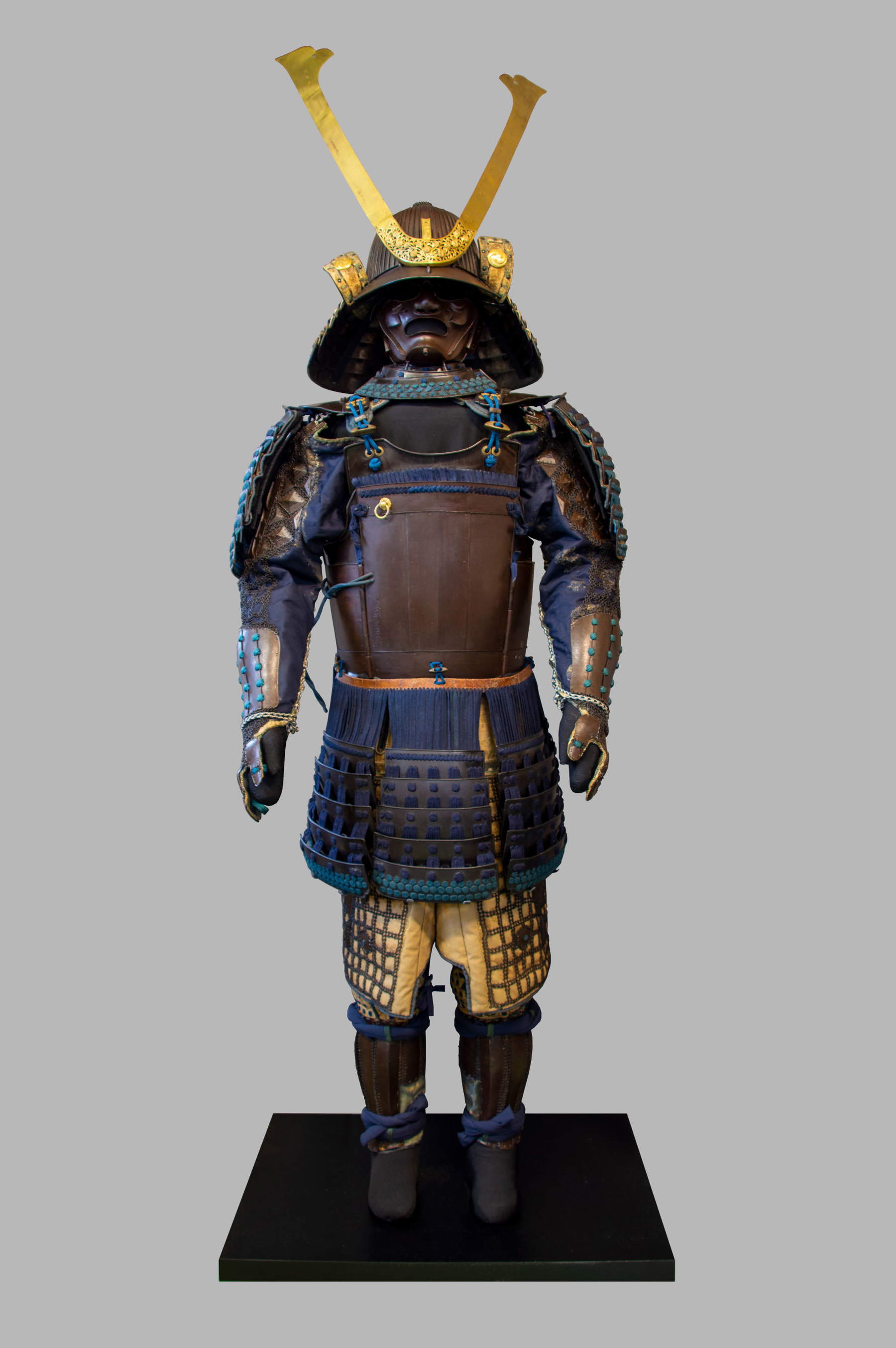

Some additions can be traced to the antiquarizing revival that developed in Japan during the 18th century. Other transformations would be related to the post-Meiji reform period, when the suppression of the Samurai caste in the 1870s prompted many families to sell or modify their armor. It is therefore plausible that the armor, before entering the Canonical collection, transited the antiques market, where it was often supplemented with coeval or reconstructed elements to restore a complete and coherent image.
From a methodological point of view, the restoration also offered an opportunity for comparison between two different approaches: the Western one, oriented toward the preservation of the original material, and the Japanese one, which favors the periodic replacement of components subject to degradation, particularly textile and lacquer components. The compromise reached has led to the preservation of salvageable parts and the replacement of deteriorated ones with materials made according to compatible techniques. In some cases, such as for cords, webbing or linings, specialized Japanese manufacturers were used. Other materials were reproduced in Italy based on models of the originals.
The intervention restored the armor’s legible appearance while preserving its historical and technical specificities. The inclusion in a new display case, accompanied by an explanatory totem and a QR code that allows access to a three-dimensional video on the work and its restoration, also strengthened the communicative and didactic aspect of the exhibit. The return of the armor to the public will be celebrated on Wednesday, June 18, with a Study Day organized by the Capitoline Superintendence at the Pietro Canonica Museum. The meeting, with free admission subject to availability, will begin at 4:30 p.m. and will provide an opportunity to explore the work done, compare conservation-didactic methodologies and place the object in its broader historical and museum context.
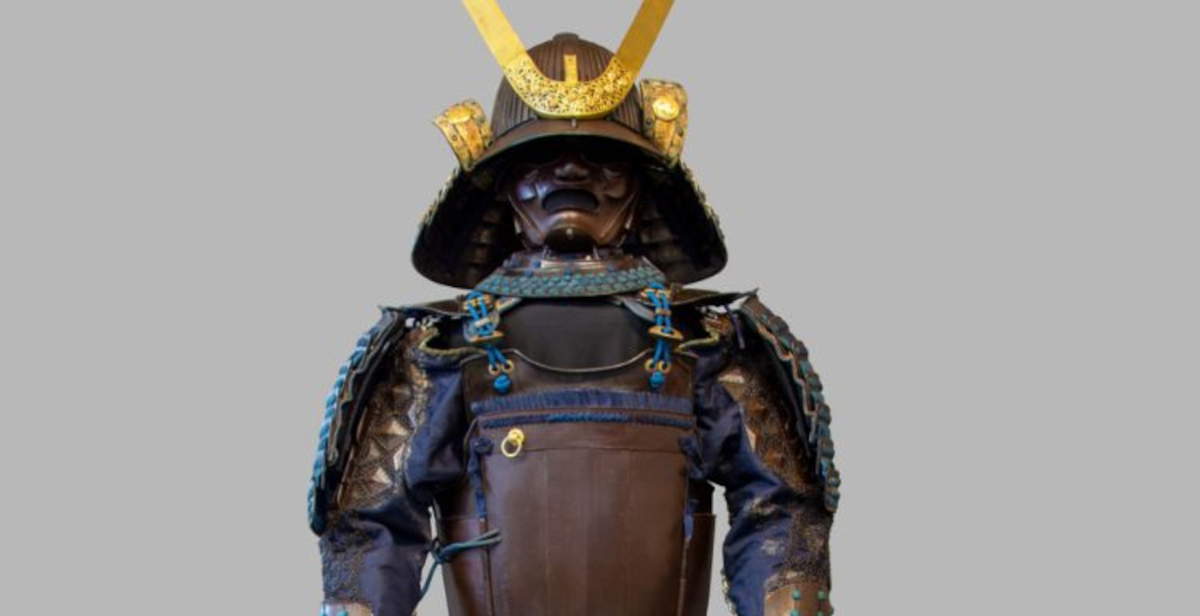 |
| Restoration of the Pietro Canonica Museum's Samurai armor in Villa Borghese concluded. |
Warning: the translation into English of the original Italian article was created using automatic tools. We undertake to review all articles, but we do not guarantee the total absence of inaccuracies in the translation due to the program. You can find the original by clicking on the ITA button. If you find any mistake,please contact us.